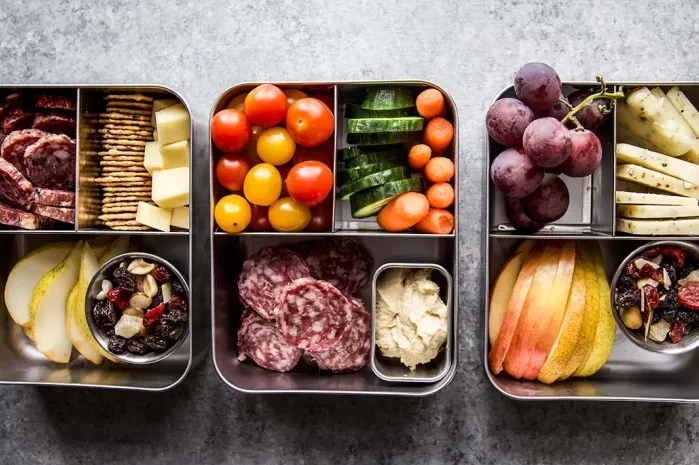Baking a cake is an art form that combines precise measurements, quality ingredients, and expert technique. Among the many challenges bakers face, ensuring that the cake rises evenly ranks high on the list. Uneven rising can lead to an unsightly appearance, a dense texture, and uneven baking, ultimately impacting the taste and presentation of the final product. Fortunately, there are several techniques and factors to consider to achieve a perfectly even cake rise every time.
Understanding the Science of Cake Rising
Before delving into the methods to ensure even cake rising, it’s essential to understand the science behind the process. Cake rising occurs due to the expansion of air bubbles trapped within the batter when exposed to heat. This expansion is facilitated by the leavening agents present in the batter, such as baking powder, baking soda, or yeast.
Leavening agents work by releasing gases, usually carbon dioxide, when activated by moisture, heat, or a combination of both. As the cake batter heats up in the oven, these gases expand, causing the cake to rise. However, for the rise to be even, several factors must be carefully controlled throughout the baking process.
Selecting the Right Ingredients
The foundation of any successful cake begins with selecting high-quality ingredients. When it comes to achieving an even rise, the type and freshness of ingredients play a crucial role.
1. Flour: Choose a high-quality all-purpose or cake flour with a moderate protein content. Too much protein can result in a dense and tough cake, while too little can lead to a weak structure unable to support even rising.
2. Leavening Agents: Pay close attention to the expiration dates of your baking powder and baking soda. Expired leavening agents may not be as effective, leading to uneven rising or a lack of rise altogether.
3. Eggs: Fresh eggs are essential for providing structure and stability to the cake batter. Be sure to use eggs at room temperature as they incorporate more easily into the batter, resulting in a smoother texture and even rise.
4. Liquid Ingredients: Use fresh dairy products such as milk and buttermilk, as well as high-quality extracts and flavorings. Avoid using ingredients straight from the refrigerator, as cold ingredients can impede the rise of the cake.
Mastering Mixing Techniques
Proper mixing techniques are crucial for creating a smooth and evenly risen cake batter. Overmixing or undermixing can lead to uneven distribution of leavening agents and air bubbles, resulting in uneven rising.
1. Creaming Method: For recipes that call for the creaming method, ensure that the butter and sugar are thoroughly creamed together until light and fluffy. This process incorporates air into the batter, promoting even rising during baking.
2. Folding Technique: When incorporating dry ingredients into the batter, use a gentle folding motion to avoid deflating any air bubbles. Overmixing at this stage can lead to a dense and poorly risen cake.
3. Room Temperature Ingredients: Allow all ingredients, particularly eggs and dairy, to come to room temperature before mixing. Cold ingredients can prevent proper emulsification and hinder the rise of the cake.
Optimizing Baking Conditions
Even baking conditions are essential for achieving a perfectly risen cake. Factors such as oven temperature, pan size, and positioning can significantly impact the final outcome.
1. Preheating the Oven: Always preheat your oven to the temperature specified in the recipe. A properly preheated oven ensures that the leavening agents activate quickly, promoting even rising from the start of the baking process.
2. Pan Selection: Choose the appropriate size and type of pan for your cake recipe. Using a pan that is too small can cause the batter to overflow, while a pan that is too large may result in a thin and unevenly risen cake. Additionally, opt for light-colored pans to promote even browning.
3. Positioning in the Oven: Place the cake pans in the center of the oven to ensure even heat distribution. Avoid overcrowding the oven with multiple pans, as this can disrupt airflow and lead to uneven baking.
4. Avoiding Oven Drafts: Be mindful of oven drafts that can cause uneven baking. Avoid opening the oven door frequently during baking, as sudden temperature fluctuations can hinder the rise of the cake.
Testing for Doneness
Properly testing for doneness is the final step in ensuring that your cake has risen evenly and is fully baked.
1. Visual Cues: Look for visual cues such as golden brown edges and a springy texture to indicate that the cake is done. A toothpick inserted into the center should come out clean or with a few moist crumbs attached.
2. Touch Test: Gently press the center of the cake with your fingertip. If it springs back lightly and feels firm to the touch, it is likely done. Avoid pressing too hard, as this can deflate the cake.
3. Cooling Properly: Allow the cake to cool in the pan on a wire rack for the time specified in the recipe. Cooling too quickly can cause the cake to collapse, while cooling for too long in the pan can result in excess moisture buildup and a soggy bottom.
Troubleshooting Uneven Rise
Even with careful attention to detail, occasional baking mishaps can occur. Here are some common issues and solutions for achieving an even cake rise:
1. Sunken Center: If the center of the cake sinks after baking, it may be due to underbaking or excess moisture. Ensure that the cake is fully baked before removing it from the oven, and avoid overmixing the batter to prevent excess moisture buildup.
2. Domed Top: A domed top is often the result of uneven heat distribution in the oven. Try reducing the oven temperature slightly and placing a baking sheet on the rack above the cake to diffuse the heat.
3. Uneven Texture: Inconsistent texture throughout the cake can indicate improper mixing or overmixing of the batter. Pay close attention to mixing techniques and avoid overmixing to achieve a smooth and even texture.
Conclusion
Achieving a perfectly even cake rise requires attention to detail, precision, and a thorough understanding of the science behind baking. By selecting high-quality ingredients, mastering mixing techniques, optimizing baking conditions, and properly testing for doneness, bakers can ensure that their cakes rise evenly every time. With practice and patience, mastering the art of even cake rising will elevate your baking skills to new heights, resulting in delicious and beautifully risen cakes for all occasions.

























